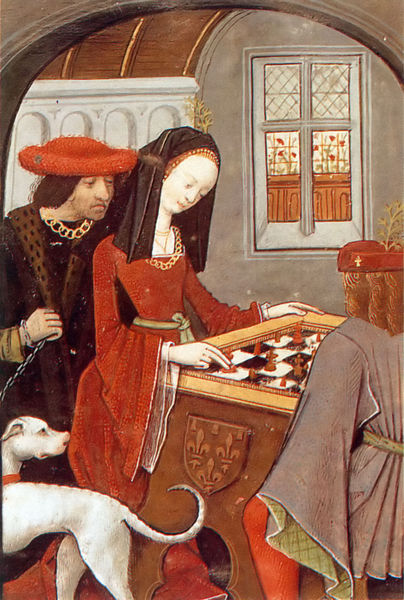I was lucky to read many excellent books last year, but these are the ones that stood out from the pack. Some are recently published; others are older books I'd never gotten around to reading. They are listed here in no particular order. The full list of books I read in 2013 may be found in the sidebar.
FEVER by Mary Beth Keane (Scribner, 2013)
FEVER tells the story of Irish immigrant Mary Mallon, popularly known as "Typhoid Mary." Proud and determined to live an independent life, Mary claws her way out of the slums to become cook to some of New York City's most prominent families. Yet, as an asymptomatic carrier of typhoid, she leaves a trail of death in her wake and winds up imprisoned and forbidden to ever cook again for public consumption. Despite her willful disregard of the terms of her release, Mary remains a sympathetic character caught in the cogs of a nascent public health machine. The author evokes turn-of-the-century New York City in the fullness of its splendor and its grime.

THE PROMISE by Ann Weisgarber (Mantle, 2013; forthcoming from Skyhorse, April 2014)
A touching, wise and beautifully executed book. There is so much below the surface of this story of two women's love for the same man, set against the devastating Galveston hurricane of 1900. THE PROMISE is about forgiveness--of self, of others, of fate--and its redemptive power. Weisgarber is a masterful writer who plumbs the truths of the human condition while enthralling readers with a tension-filled tale of characters caught in circumstances beyond their control. Her books offer a hope-filled vision of humanity that is missing from so many modern works. I loved THE PERSONAL HISTORY OF RACHEL DUPREE, but THE PROMISE simply blew me away. If you read one book this year, make it this one.

THE GIRLS OF ATOMIC CITY by Denise Kiernan (Touchstone, 2013)
I don't read much nonfiction, and this book made me realize what I might be missing. GIRLS tells the hidden story of the women--from secretaries to janitors to scientists--who contributed to the development of the atomic bomb at Oak Ridge, Tennessee, during the Second World War. Kiernan constructs a fascinating account of this secret city whose every inhabitant devoted herself to the furtherance of a mysterious project they were told would lead to the end of the war. No one knew anything beyond the scope of her specific duties and learned not to inquire into those of friends and neighbors, yet each worked with dedication and patriotic fervor, determined to bring brothers and husbands home from battle. A riveting read, one that sheds light on the nature of the time and raises interesting questions about whether secrecy on such a large scale would even be possible today.

THE PAINTED GIRLS by Cathy Marie Buchanan (Riverhead, 2013)
This novel deserves the hype it has received ever since its publication. It follows the plight of three impoverished sisters as they struggle to survive in the underbelly of nineteenth century Paris. One sister, who dances in the ballet and poses for Edgar Dégas, submits to a rich patron's exploitation in order to give the youngest a chance for a better life; the other, who takes a bit part in a stage production, becomes embroiled in the crime-ridden underworld. With subtle efficacy, the novel explores the sociological issue of whether nature, nurture or circumstance nudges individuals towards delinquency. A convincing evocation of the seamier corners of nineteenth century Paris combined with an emotionally satisfying twist at the end makes this novel a compelling read.

CUTTING FOR STONE by Abraham Verghese (Knopf, 2009)
Moving from India to Ethiopia to New York City, CUTTING FOR STONE tells the haunting story of twin brothers Marion and Shiva, born of the secret union of an Indian nun and a British surgeon at a mission hospital. Set against a backdrop of political turmoil, the narrative weaves a beautiful tapestry of family ties, trust, betrayal, life, death, and miracles both great and small. The author, a surgeon himself, incorporates medical detail into the fabric of the story and explores with insight and compassion the daily challenges of serving the sick in impoverished, strife-ridden areas. But it is the symbiotic, emotionally powerful relationship of the brothers that keeps the reader turning the pages.

THE ENCHANTRESS OF FLORENCE by Salman Rushdie (Random House, 2008)
An elaborate, artful, and continually surprising exploration of the power of story. West meets East as a conjurer from Renaissance Florence travels to the Mughal court of India to share the tale of the mysterious and breathtakingly beautiful princess Qara Köz. The reader often loses track of the convoluted and fantastical plot, but even so is sucked into the tale by Rushie, the true enchanter. A book that would sustain multiple readings and delight anew each time. The hero reminded me strongly of Dorothy Dunnett's Lymond. A dazzling feast of words.

THE CLEANER OF CHARTRES by Salley Vickers (Viking, 2013)
The sensitive story of Agnès Morel, a woman with a troubled past who attracts the scrutiny and enmity of the town gossip. The quirky style will either please or annoy, but the finely drawn, believable characters and a plot that expertly weaves past with present and leads to a celebration of human goodness make this a richly rewarding tale. The cathedral of Chartres provides a fitting setting for Agnès's rehabilitation and redemption, and the author's shrewd understanding of the dynamics of provincial town society keep sentimentality at bay.





















